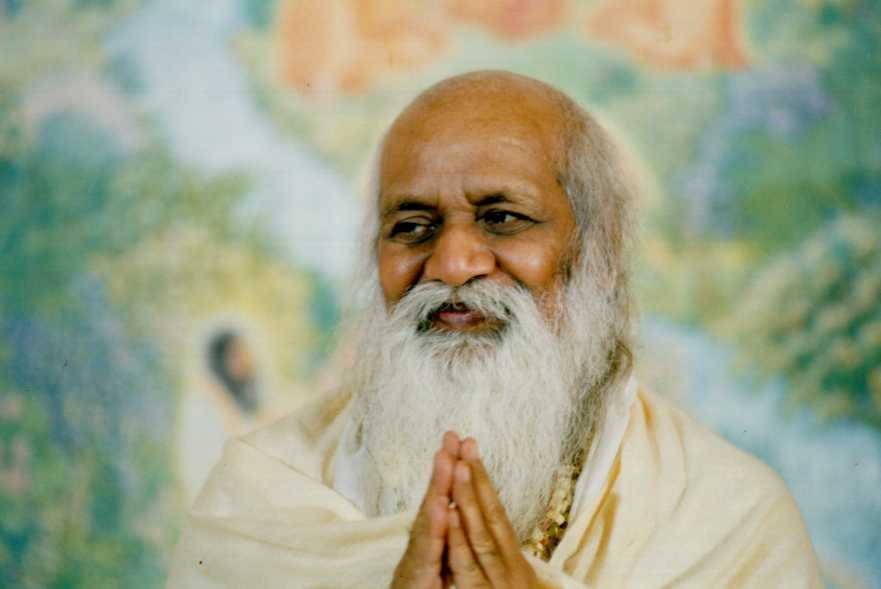Lesson 1) Magnum Opus
Welcome back students to another wonderful year of Alchemy! As you all may know by now, I'm Professor Rosenquist and I will be taking you on this fascinating journey! This year we will concentrate on a branch of alchemy known as Hermetic alchemy. It's quite interesting and more focused on the spiritual side of alchemy.
If you have any questions, feel free to owl me as always! Are you excited? I sure am!
Hermetic Alchemy is for Hermits, Right?
You are probably wondering what exactly Hermetic alchemy is. Well, I can tell you it's not alchemy for hermits, but is in fact a branch of alchemy based on the teachings of Hermes Trismegistus. We learned about him last year as the creator of the Emerald Tablet so I won't go into detail about him here. We know that alchemy is involved with transmutations, of taking one thing and transforming it into something completely different. Usually, we would think of this as base metals being transmuted into noble metals, such as lead into gold. This is not always referring to a physical change, however.
Hermetic Alchemy is the transmutation of the common man into the divine man. The common man is the person we know from our everyday lives. In other words, it is you right now. The transmutation involves becoming aware of different aspects of yourself. You need to be aware of your physical body and its energies, your emotions, your thoughts, and the divine center (your inner self). After being aware, you need to be able to purify your body, emotions, and thoughts. This will cause the divine center to shine through and manifest in the physical plane, providing clarity of awareness at all times. Think of the common man state as if you were asleep. When you fully wake up, get rid of your morning voice, and rub the sleep out of your eyes to start the day, that is the divine man state.
Why exactly is this relevant at all? This process is the Great Work.
Spirituals Aren't for the Weak-Hearted The Great Work is something you may have heard of throughout the past two Alchemy years under the name, Magnum Opus: the purification of your awareness, a spiritual journey only you can take yourself on. The main goal of the Great Work is enlightenment. Enlightenment is the state where you become aware of your divine self. Within all of us, we have a divine center that is obscured by our thoughts, emotions, and physical body. In order to reach true enlightenment, you not only have to attain pure awareness, but you must maintain it constantly.
The Great Work is something you may have heard of throughout the past two Alchemy years under the name, Magnum Opus: the purification of your awareness, a spiritual journey only you can take yourself on. The main goal of the Great Work is enlightenment. Enlightenment is the state where you become aware of your divine self. Within all of us, we have a divine center that is obscured by our thoughts, emotions, and physical body. In order to reach true enlightenment, you not only have to attain pure awareness, but you must maintain it constantly.
How do you go about reaching that final state of enlightenment? In order to even begin the Great Work, you need to do spiritual practices. The basis of every spiritual practice is the elimination of unwanted emotions and thoughts. If you want to be successful with any spiritual practice, you need to keep that in mind. When using magic, the more you practice the better you get. The same concept applies here and really anywhere else. Your mind isn't going to clear up the first time you do a spiritual practice; it isn't going to do what you tell it to do right away. That's completely fine because practice makes perfect!
In terms of the Great Work, the more you practice, the clearer your mind becomes, the sharper your awareness becomes, and more of your divine light will shine through. All spiritual practices have the same basic outline:
- Nigredo (blackness): initial awareness of superfluous emotions and thoughts.
- Albedo (whiteness): pure awareness of oneself.
- Citrinitas (yellowness): pure awareness is manifested in the material world.
- Rubedo (redness): pure awareness is permanent.
We will be going more into detail about these stages next week. Every single phase listed above is a phase of the Great Work itself as well as any other spiritual practice. You need to do spiritual practices to go through the Great Work, however the Great Work is a giant all-encompassing spiritual practice all by itself!
One of the most common types of spiritual practices is meditation. You learned a little about meditation and how it helps your focus in your Second Year Defense Against the Dark Arts class. In order to rid your mind of constant emotions and thoughts so that you can achieve pure awareness, you need a lot of focus. Let's say you're trying to go to sleep, but you keep thinking of random things that prevent you from actually drifting off. Meditation will help with this! Building your concentration and clearing your mind will also make it easier to perform magic as well. While you still need to have a certain amount of willpower, you will find that the focus aspect will get much easier.

 One exercise that Maharishi Mahesh Yogi suggested is trying to visualize a physical object such as a lit match when you close your eyes. Once you visualize the match, you will need to maintain the image for a period of time without being disrupted by thoughts. My advice would be to work your way in small increments up to twenty minutes. When you try it for the first time, do it for a minute, then the next day aim for two minutes, then five minutes, eight minutes, and so on until you reach twenty minutes. Do not try to aim for twenty minutes your first time trying this exercise. I promise you that you will not be able to do it perfectly unless you have been practicing meditation for a while. Set small goals for yourself and pick a pace that works the best for you.
One exercise that Maharishi Mahesh Yogi suggested is trying to visualize a physical object such as a lit match when you close your eyes. Once you visualize the match, you will need to maintain the image for a period of time without being disrupted by thoughts. My advice would be to work your way in small increments up to twenty minutes. When you try it for the first time, do it for a minute, then the next day aim for two minutes, then five minutes, eight minutes, and so on until you reach twenty minutes. Do not try to aim for twenty minutes your first time trying this exercise. I promise you that you will not be able to do it perfectly unless you have been practicing meditation for a while. Set small goals for yourself and pick a pace that works the best for you.
 Buddhist meditation techniques are another great option to consider. Of course, there are many different areas and styles, but one branch in particular I found helpful was Dzogchen. Dzogchen, also called Atiyoga, is a branch of teachings from Tibetan Buddhism. The name itself means "Great Perfection." Dzogchen is aimed specifically at attaining and maintaining the natural state. It emphasizes simplicity, naturalness, and spontaneity. The teachings explain probably one of the easiest ways to reduce unwanted thoughts. The goal isn't to have no thoughts at all, but to have a clear state of awareness in which you have no random thoughts. It's a state in which you can initiate the thoughts you want when you want. The thoughts aren't controlling you, you're controlling them. It's a gentle process that doesn’t involve trying to force yourself not to think. If you want to learn more, I would suggest looking up some books about Dzogchen as there's so much information on the whole branch that I can't cover in just one lesson. You will probably find it very enlightening!
Buddhist meditation techniques are another great option to consider. Of course, there are many different areas and styles, but one branch in particular I found helpful was Dzogchen. Dzogchen, also called Atiyoga, is a branch of teachings from Tibetan Buddhism. The name itself means "Great Perfection." Dzogchen is aimed specifically at attaining and maintaining the natural state. It emphasizes simplicity, naturalness, and spontaneity. The teachings explain probably one of the easiest ways to reduce unwanted thoughts. The goal isn't to have no thoughts at all, but to have a clear state of awareness in which you have no random thoughts. It's a state in which you can initiate the thoughts you want when you want. The thoughts aren't controlling you, you're controlling them. It's a gentle process that doesn’t involve trying to force yourself not to think. If you want to learn more, I would suggest looking up some books about Dzogchen as there's so much information on the whole branch that I can't cover in just one lesson. You will probably find it very enlightening!
Another practice you could use is thought awareness. You can either try to stop the thoughts or let them pass by and simply observe them indifferently. Either way works as they both require clear awareness. Neither of the options are easy, though I believe the first one is slightly more difficult than the latter.
One thing to think about when you are meditating is setting. The ideal setting for meditation is a monastery or a cave, as they are places that provide complete solitude. Complete solitude isn't a requirement, but it's easier to get rid of distracting thoughts when there aren't distractions around you. Try to aim for relatively quiet places such as your bedroom or a secluded classroom. It's also best to be as comfortable as possible, as you don't want to be distracted by how uncomfortable you are or how your foot fell asleep, so don't be afraid to take some pillows and blankets!
 The purpose of meditation isn't to have thoughts at all, but to be aware of your inner self. As I said before, your mind won't do what you want it to do at first. It takes discipline to get results. Even if you have a natural talent for meditation, you still need to practice to be perfect.
The purpose of meditation isn't to have thoughts at all, but to be aware of your inner self. As I said before, your mind won't do what you want it to do at first. It takes discipline to get results. Even if you have a natural talent for meditation, you still need to practice to be perfect.
Remember that spiritual alchemy is a lifestyle. It transforms your entire being, from your actions, to your attitude and the emotions you're feeling, to your daily diet, and even the company you keep and your environment. Also, everything that I just listed can affect your meditation as much as your meditation can affect them. Reading the meditative teachings of Buddhism, Gnosticism, Rosicrucianism, Theosophy, and early Christian works can also help guide you on your journey.
The Spiritual Process
I hope by this point in the lesson that you have all understood that the Great Work is a spiritual process. However, it can also be used to describe a physical process used in creating the Philosopher's Stone. There are some alchemical manuscripts that describe the Great Work as laboratory chemistry, and there are others that explain the spiritual process with chemical symbols. Unfortunately, most of the existing manuscripts are pulled from various different texts as only a few alchemists have ever made it to the end of the Great Work. There are some who do talk about the Great Work as a spiritual process, describing it directly, through allegories, or via symbols.
This knowledge was often shared between alchemists. There was actually an instance in which alchemists would gather in the back of the Notre Dame cathedral to share their ideas, knowledge, and experiences with the Great Work. They did this because an individual’s experience with the Great Work differs from everyone else's experience. Seeing something from a different perspective can really open your eyes and answer any questions you may have.
Since everyone's experience was different, alchemists used alchemical symbols to describe their individual process in a way that other alchemists could understand. In turn, someone can use manuscripts and these symbols to improve their own practice to achieve better results. With that being said, I cannot stress enough how important symbols are in any type of alchemy you will come across. Not only will they help you understand alchemical processes and texts better, but you will need them for transmuting the elements if you decide not to use the seven planetary aspects.
I will go more into detail with this in a later lesson because we are all out of time for today!
- ALCH-301
Enroll


